ANALYSIS
An analysis on different literature is made, as a way to orient and justify the design decisions.
This analysis comprises:
The relevance of wood in cladding systems.
Material and treatment knowledge.
The relevance of wood in cladding systems
CO2 emissions of different cladding systems per m²
Wooden systems show a big advantage, in front of the other common systems. Their emissions are 20 times less than the metal facade systems, and 10 times less than the reinforced concrete facade systems.
CO2 storage in wood cladding per m²

Wood is the only material that can store CO2. With this characteristic it can easily compensate its emissions and still go beyond. The carbon storage is 10 times bigger than the emissions.
Material and treatment knowledge

Norway spruce, Scot pine, European lach, Sessile oak and European white birch
Different wood species were studied in order to analyze their potential to be used in a cladding system. At the end, the Scot pine wood was the most suitable option for making long-lasting wooden elements.
Scot pine
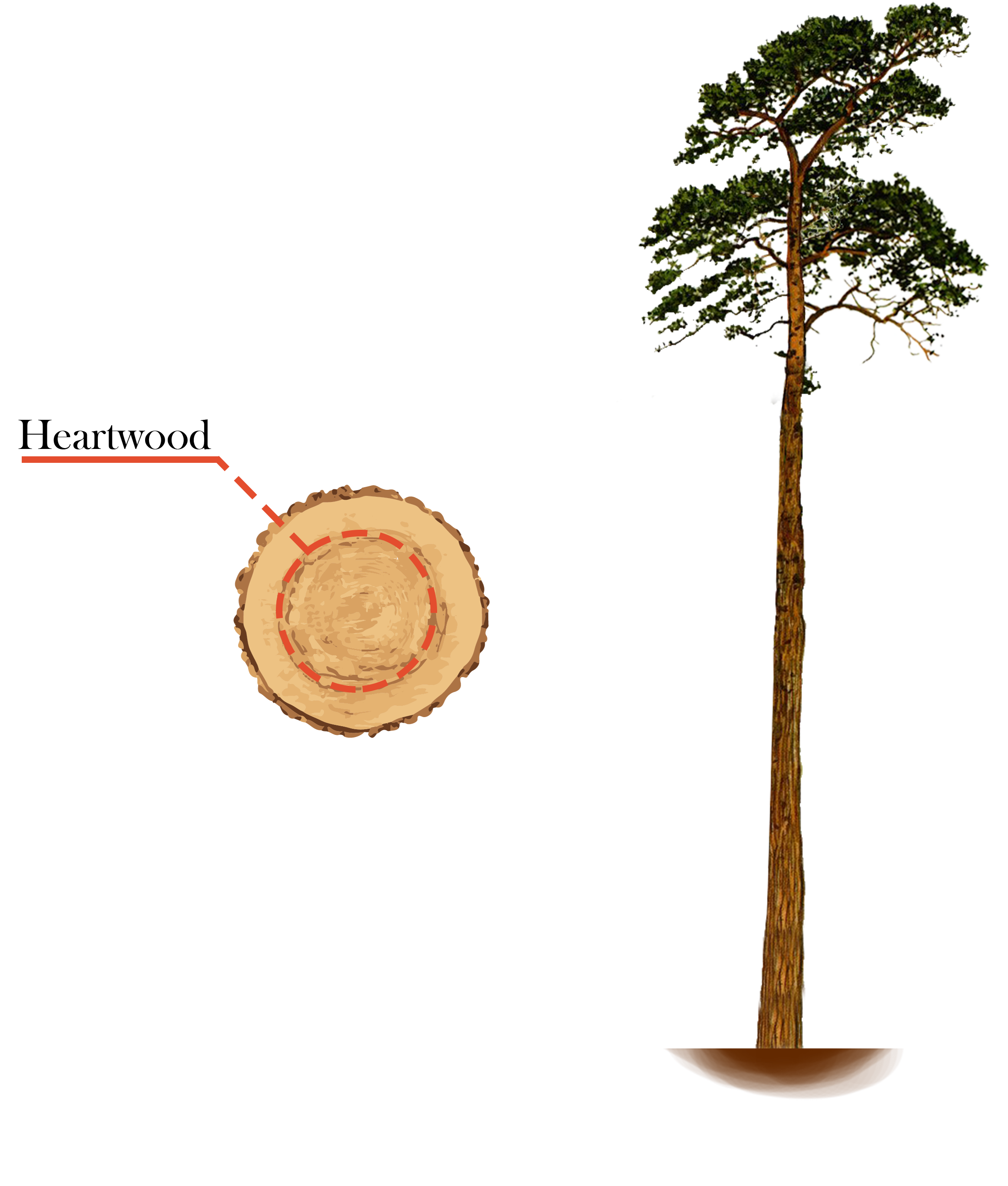
The Scot pine is coniferous tree whose heartwood is rich in pinosylvins and fatty acids. This characteristics make it resistant to rot and decay.
Wood Treatments
- Acrylic paint
- Alkyd paint
- Linseed oil paint
- Röd slamfärg paint
- Pine tar
- Thermal modification
- Vacuum pressure impregnation
The list above shows the wood treatments that were analyzed for the making of durable wood elements. The design proposal included the traditional röd slamfärg paint.
Röd slamfärg paint
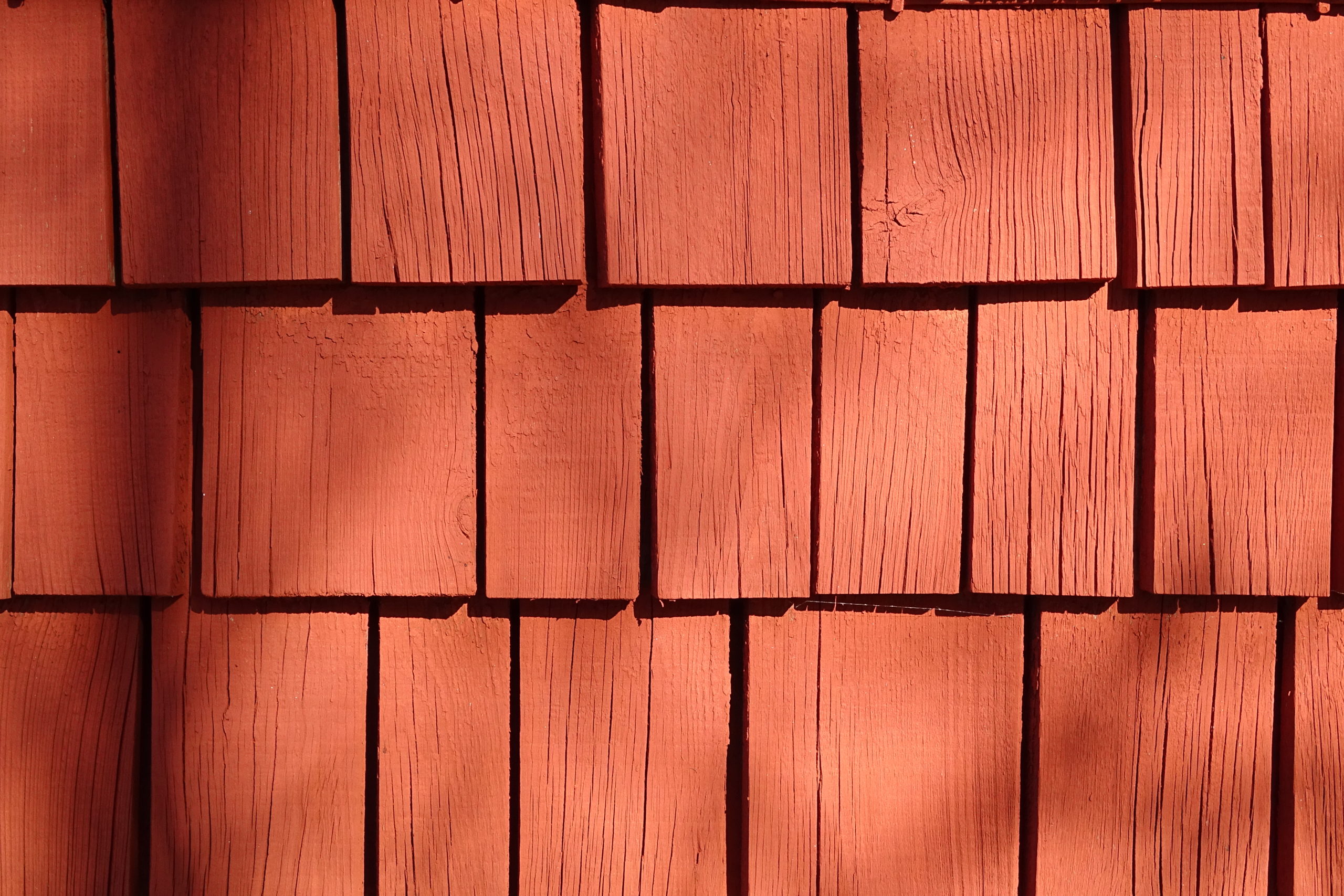
The red slamfärg paint is a traditional painting made of natural pigments, a binder of either rye, flour or wheat flour, linseed oil, and water.
Most remarkable benefits:
- The elements don’t become impervious
- It can last up to 20 years
- It is an effective coating against UV degradation
- The layer degrades uniformly with time.
Traditional claddings
The research centered on the traditional practices for making church shingles. The images below show a the most relevant factors within the selection, the making and the placement.
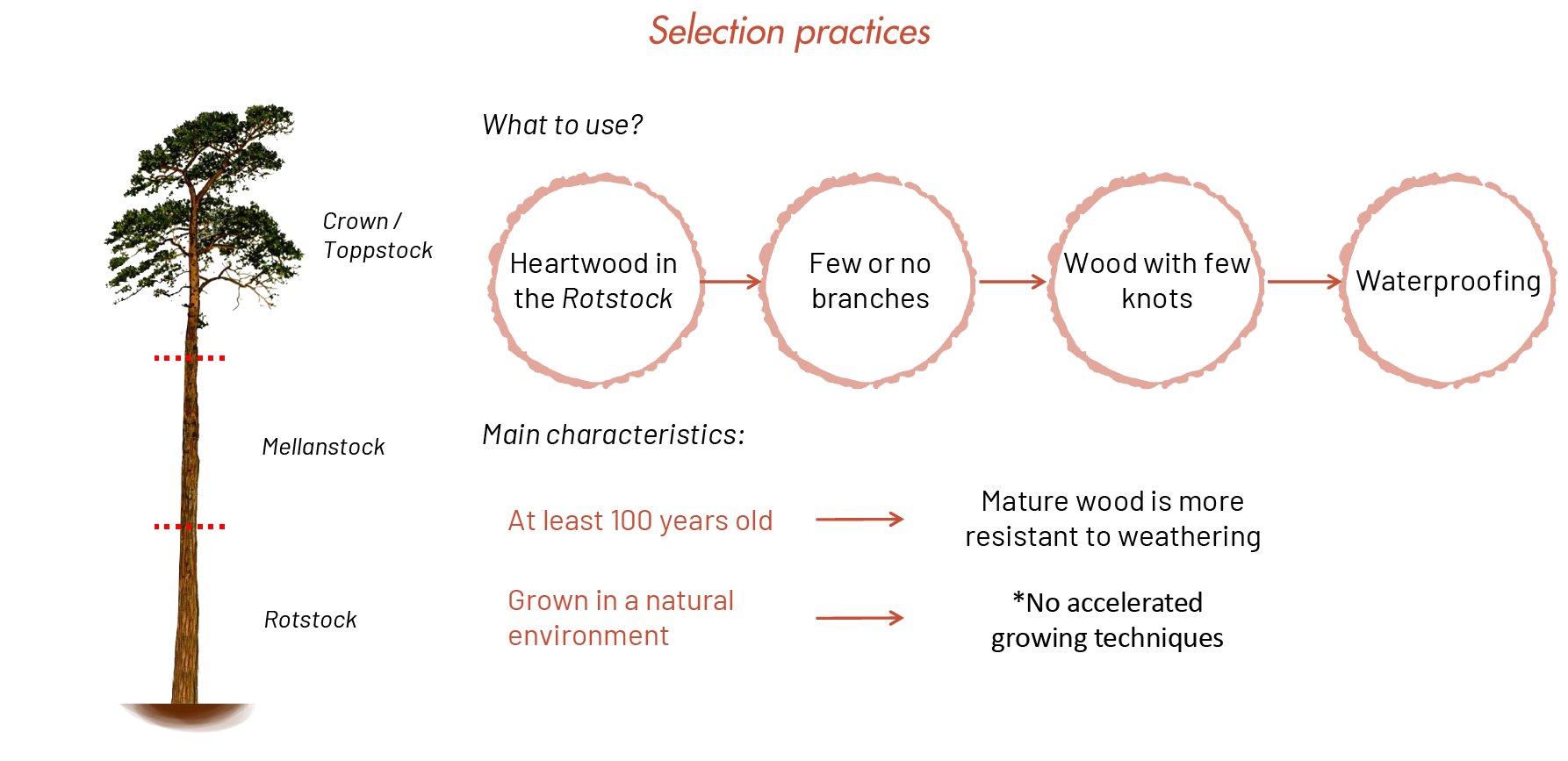
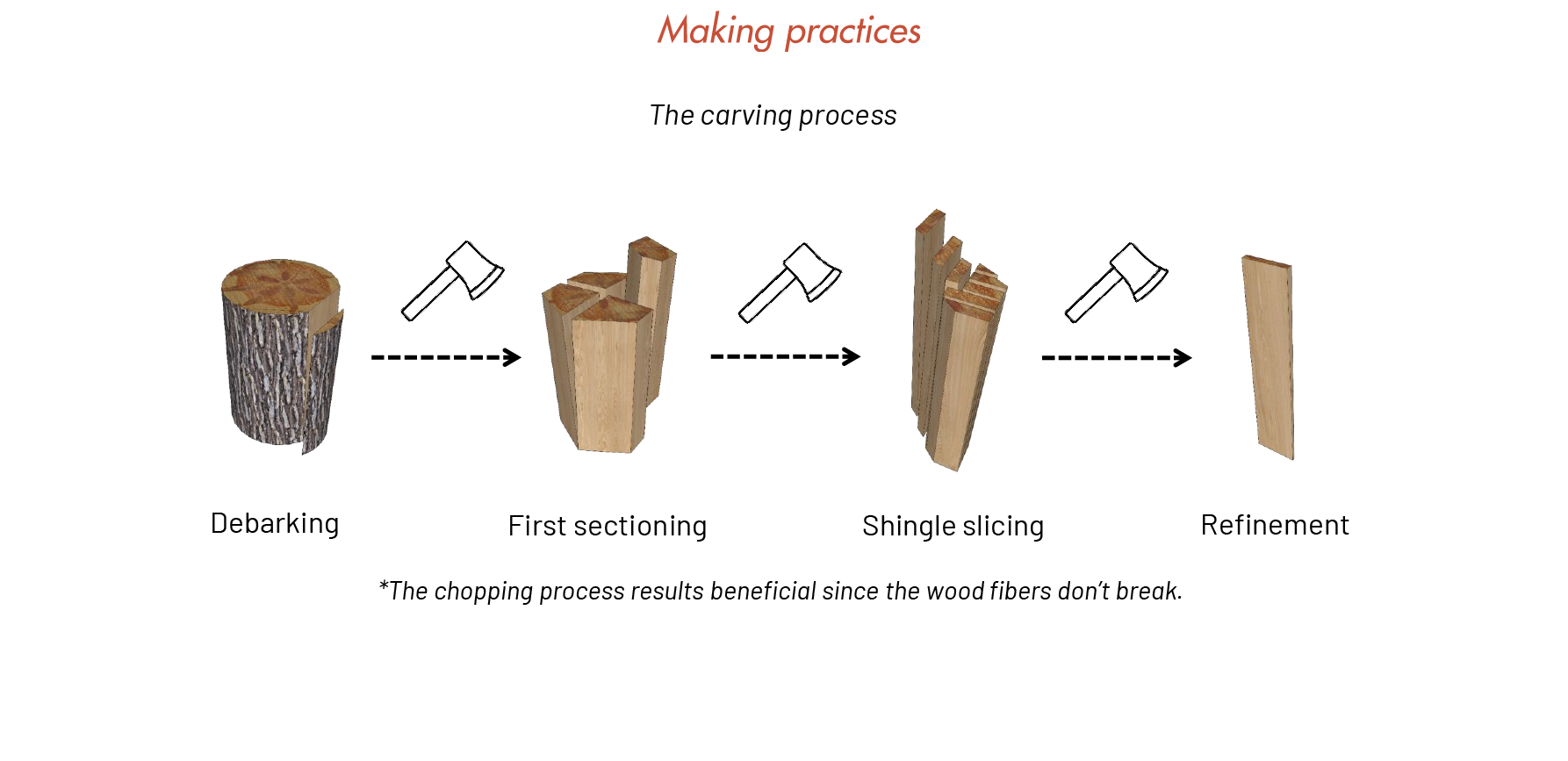
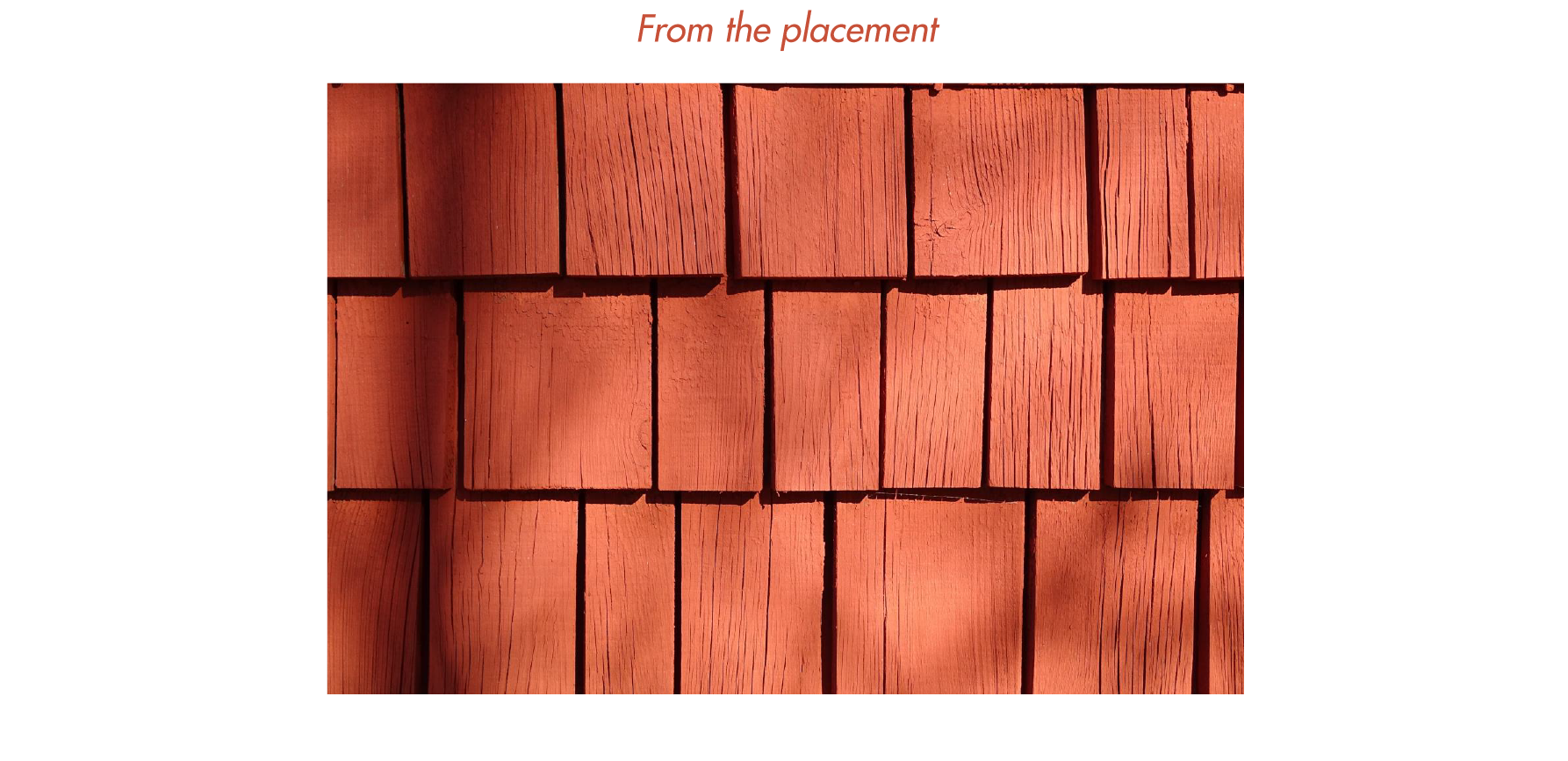

modern claddings
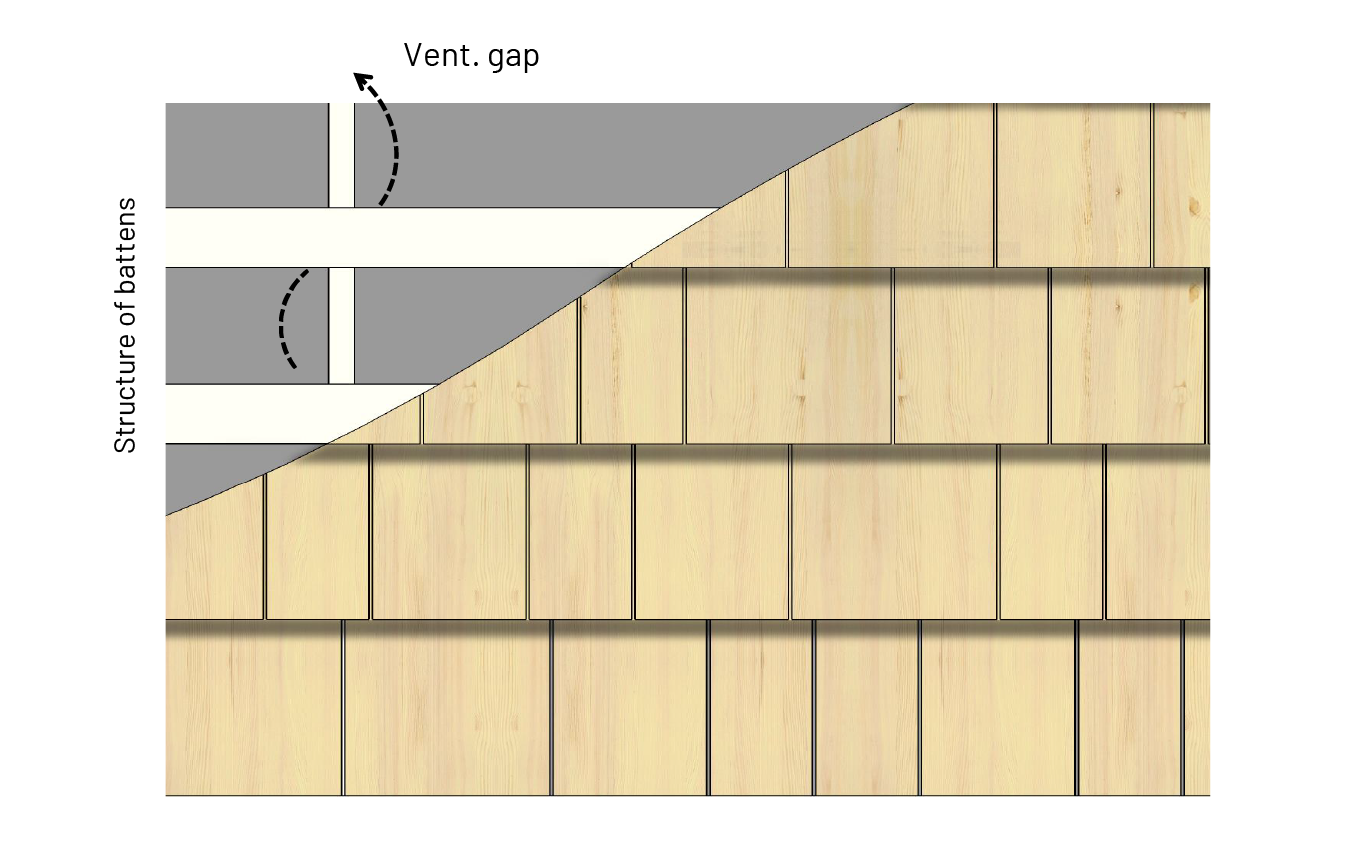
The modern cladding are based on sets of layers that are assembled with metal nails.
They are based on traditional arrangements – BUT – the making is not regarded as it was before.
- The attention to the details of the selection of a high-quality material is lost.
The shingles are placed on a structure made of battens that create ventilation gaps.


